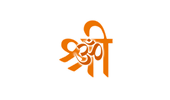P 90 91 Government has a huge Responsibility to Protect Dharma
30. April 2020P 82 85 How to Become a Karma Yogi?
30. April 2020P 86 89 The Key to Yogic Success
[In continuation with the last preaching]
The highest goal of the karma kanda section of the Vedas (the section on karma yoga) is to purify the antahkaran (inner organ, i.e., mind, ego, consciousness) of the jiva (individual self) so that it can unite with sat-chit-ananda (being-pure consciousness-bliss) and paramatma (highest Self).
According to the upasana section of the Vedas (the section on spiritual practices), yoga is the cessation of the fluctuations of the mind. The final goal, which is achieved by sadhana (spiritual practices), is to allow these fluctuations to cease so that one can experience of the true essence of paramatma. As a man can see his face in a calm waveless sea, when the fluctuations of the mind stop one sees the unchangeable Self in the inner organ. This truly is the darshan of atma (perception of the Self).
According to the jnana section of the Vedas (the section on knowledge), yoga is the union of the jiva atma (individual self) and paramatma (universal Self). The highest goal of the path of knowledge is to realize the non-duality of the individual self and the highest Self. This realization is gained by the grace of wisdom, which removes the mistaken belief, born of avidya (ignorance), that the jiva atma and paramatma are distinct.
The Vedic trikand (three sections of Vedic scriptures) thus present three approaches (karma, upasana, and jnana). Moreover, there are many different types of yoga in the upasana section, such as mantra-, hatha-, laya-, and raja yoga. As a result, the sadhak (spiritual practitioner) cannot determine by himself which approach is best for him.
The new sadhak is often eager to begin his practice when he reads or hears about the greatness of the different Yoga traditions. On the other hand, many householders and others back away from the idea of yoga simply on hearing of that there are many types. They think Yoga must be difficult, and become discouraged to the point that they are no longer suitable candidates. There are other people who take up, or reject, the practice of Yoga without any actual knowledge of the various approaches. People who start or stop the practice based on their own fancies err. Yoga is not something one can understand on his own pleasure or by reading books.
Not all yogic practices are so difficult or dangerous that they unsuitable for householders. Today’s householders should bear in mind that Vyasa, Vasishtha, Jamadagni, Parashara were all householders having hundreds of sons. Nonetheless they became great yogis of a high level. So there is no need for householders to be confused about Yoga.
There are various types of yoga, but the end result is the same. Not all methods are suitable for all people, however. If someone is dedicated to a particular method and is authorized and suited to practice that method, he will certainly get benefits. On the other hand, if one is not authorized to take up a particular practice and has not received proper guidance from a qualified guru, his practice may create more loss than gain. A sadhak who is not knowledgeable about the various types of yoga cannot decide for himself which type of yoga is best for him.
If a patient is put inside a pharmacy which has got all medicines capable of curing his disease, even then he cannot cure himself. He needs a doctor to diagnose the cause of his disease and prescribe the correct remedy. Similarly, the patient seeking release from the great disease of samsara (cycle of birth and death) needs a true guru as a doctor to determine the upasana that is best for him. The three main medicines for the disease of samsara – karma, upasana and jnana – are explained in the shastras, and are different. Which diagnosis will be appropriate for us, i.e., which upasana will be beneficial, cannot be known by the sadhak himself. Only a qualified guru can ascertain the right medicine by taking into consideration the sadhak’s life situation, energy, condition, time, and previous samskaras and karma, as he has knowledge of the types of upasana and Yoga. If a sadhak follows the upasana prescribed by a true guru with confidence and devotion, he will quickly progress.
Another important point is that the same medicine is not always given to the patient in the same way. When the patient’s condition improves, fortifying medicines are added to his regular medication. Likewise, as a child progresses in school, the difficulty of his syllabus is slowly increased. In the same way, gurus gradually vary the methods of practice for the sadhak engaged in upasana. As the sadhak progresses, the practices become more subtle. The sadhak graduates from one class of sadhana to the next until, in the end, he rises to the highest grade. But this will only happen if the sadhak has developed a very good relationship with the guru and carefully follows his instructions.
A human birth is difficult to attain. One should not arbitrarily fritter away one’s time. We should search for real teachers and learn from them the method of upasana most suitable for us and, with their guidance, strive to cross the ocean of samsara. Otherwise time and life will pass and, in the end, one is left only with regret. Who knows when breathing will stop! Before the body is given up, make a strong rope of worship to Bhagvan. With its help you can then cross the ocean of samsara. Otherwise, you will have no base or foundation, and there is no way of knowing in which womb or in what low place you will fall.

